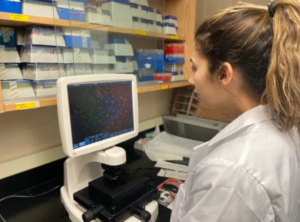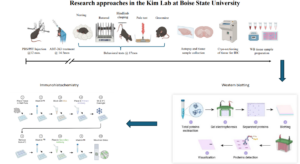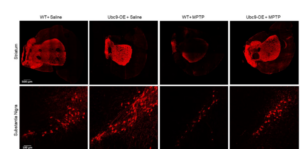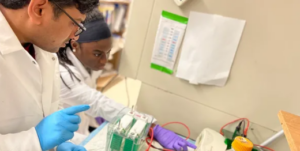Lab Research
Welcome to the Kim Laboratory for Parkinson’s disease research. Our lab research is focused on identifying potential therapeutic targets based on understanding of PD pathology and developing novel therapeutics for Parkinson’s Disease (PD). We utilize molecular & cellular biology-based methodology to investigate the pathological mechanisms of PD.
Parkinson's Disease
PD is the most common neurodegenerative motor disease, affecting more than 1% of the population above the age of 60 in the US. The disorder is primarily characterized by the selective loss of dopaminergic neurons within the Substantia nigra pars compacta (SNpc) in the midbrain and the formation of intraneuronal inclusions called “Lewy bodies” which contain alpha-synuclein as their major protein component. The pathological mechanisms associated with PD are largely unknown, however, the A53T mutation of alpha-synuclein causes Lewy body formation and is a well-known genetic PD model. Our goal is to improve our understanding of PD pathological mechanisms which may lead to finding efficient and safe therapeutics in the treatment of PD.
Laboratory Techniques
Common Laboratory techniques: Western blot, qRT-PCR, cell viability/cytotoxicity assays (MTT & LDH), ELISA, protein activity assays (including DAT, HAT & HDAC), ROS measurements, Protein aggregation (Thioflavin T) assay, primary neuron/astrocytes/microglia culture, microarray, Immunoprecipitation, immunohistochemistry, confocal microscopy, stereology, and Mass Spectrometry & MS imaging (collaboration) in our study, while accommodating new and high-technological advances including Nano-String for testing lab hypotheses.
Please check out our recent publications and presentations for more details.





